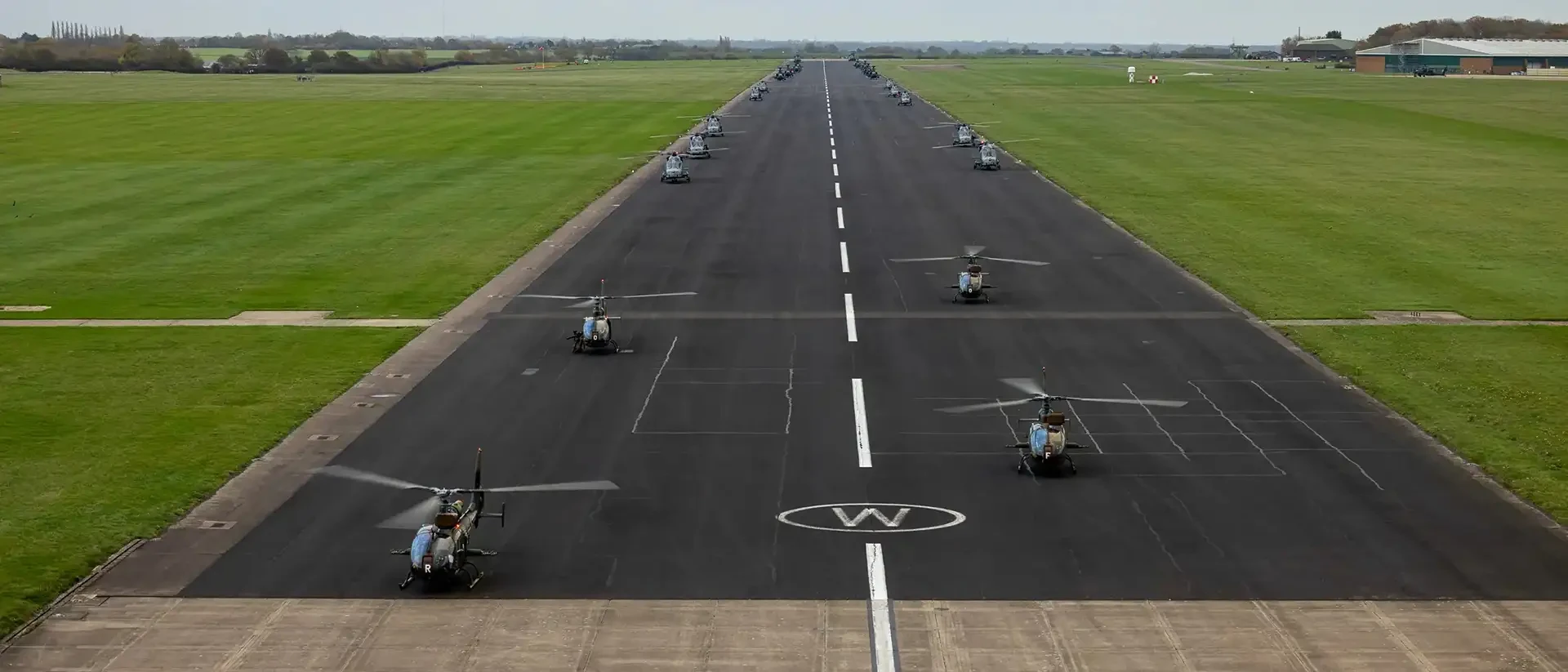A powerful force of British and French helicopters has taken off to start a major training exercise to show they are ready for NATO combat operations.
A formation of eight Apache, 10 Wildcat, two Chinook, and four Gazelle helicopters lifted off from Wattisham Flying Station in Suffolk after taxiing along the runway together. Military pilots call this an 'elephant walk' and it shows how strong, ready, and coordinated the forces are.
“This exercise demonstrates that 1st Aviation Brigade is one of NATOs most capable and ready formations, prepared to defend the UK and our allies.” Said Brigadier Nick English, Commander of 1st Aviation Brigade
Up to 50 helicopters, 1,000 vehicles and 2,000 soldiers from the British Army, Royal Air Force, French Armee de Terre and US Army are taking part in Exercise Pinion Titan. The training is led by 1st Aviation Brigade and will continue until the end of November.
Brigadier English, said: “An elephant walk is a striking demonstration of strength and readiness. Preparing four different types of aircraft to fly together is a significant engineering and logistical achievement. It proves to us and to potential adversaries that we have the teamwork and coordination needed for real-world combat operations. Exercise Pinion Titan marks the end of a modernization program started when 1st Aviation Brigade was formed in 2020. Every one of our soldiers, vehicles, and helicopters is going into the field for us to test our capabilities together. We will be working closely with the RAF, our French and US allies, and integrating cutting-edge technologies such as drones and advanced communications systems. This exercise demonstrates that 1st Aviation Brigade is one of NATO’s most capable and ready formations, prepared to defend the UK and our allies.”
A period of initial training at Wattisham will see the force set itself up as two battle groups, led by 3 and 4 Regiments Army Air Corps. A team of planning officers from the US 12th Combat Aviation Brigade will be working with 4 Regiment Army Air Corps.
The troops will then travel to set up bases across northern England to fly and maintain their helicopters. The battle groups will plan and carry out practice missions, with helicopters flying from the Scottish Highlands all the way to Salisbury Plain.
In deep strike operations, Apache and Gazelle attack helicopters will fly far behind enemy lines to strike targets like artillery and supply depots. Destroying these makes the fight easier for soldiers on the front line.
In air assault operations, RAF Chinook helicopters from 18 Squadron will transport paratroopers and equipment into action. Apaches and Gazelles will fly alongside to protect them.
“For most of the soldiers, it is their first time working with allied forces, but we can see that France and Britain share a common military culture.” Said Capitaine Damien, 3e Régiment d'Hélicoptères de Combat
The advanced sights and sensors of Wildcat reconnaissance helicopters, from 1 Regiment Army Air Corps, will gather information about the enemy to help plan missions.
The Brigade Support Force is made up of 7 Aviation Support Battalion Royal Electrical and Mechanical Engineers and 158 Regiment Royal Logistic Corps. They will supply the battle groups with everything from food to ammunition and provide expert maintenance and engineering support.
The French troops flying Gazelles are from 3e Régiment d'Hélicoptères de Combat. Their involvement shows the key role of Britain and France in NATO and the closer military cooperation between the two countries that started with the 2010 Lancaster House Treaties.
Capitaine Damien, commander of the French contingent, said: "We are very proud to participate in this major exercise, which is a great opportunity to enhance our operational readiness. For most of the soldiers, it is their first time working with allied forces, but we can see that France and Britain share a common military culture. This will lead to smooth integration and the development of a joint force with solid tactical capabilities."
 HOME
HOME



